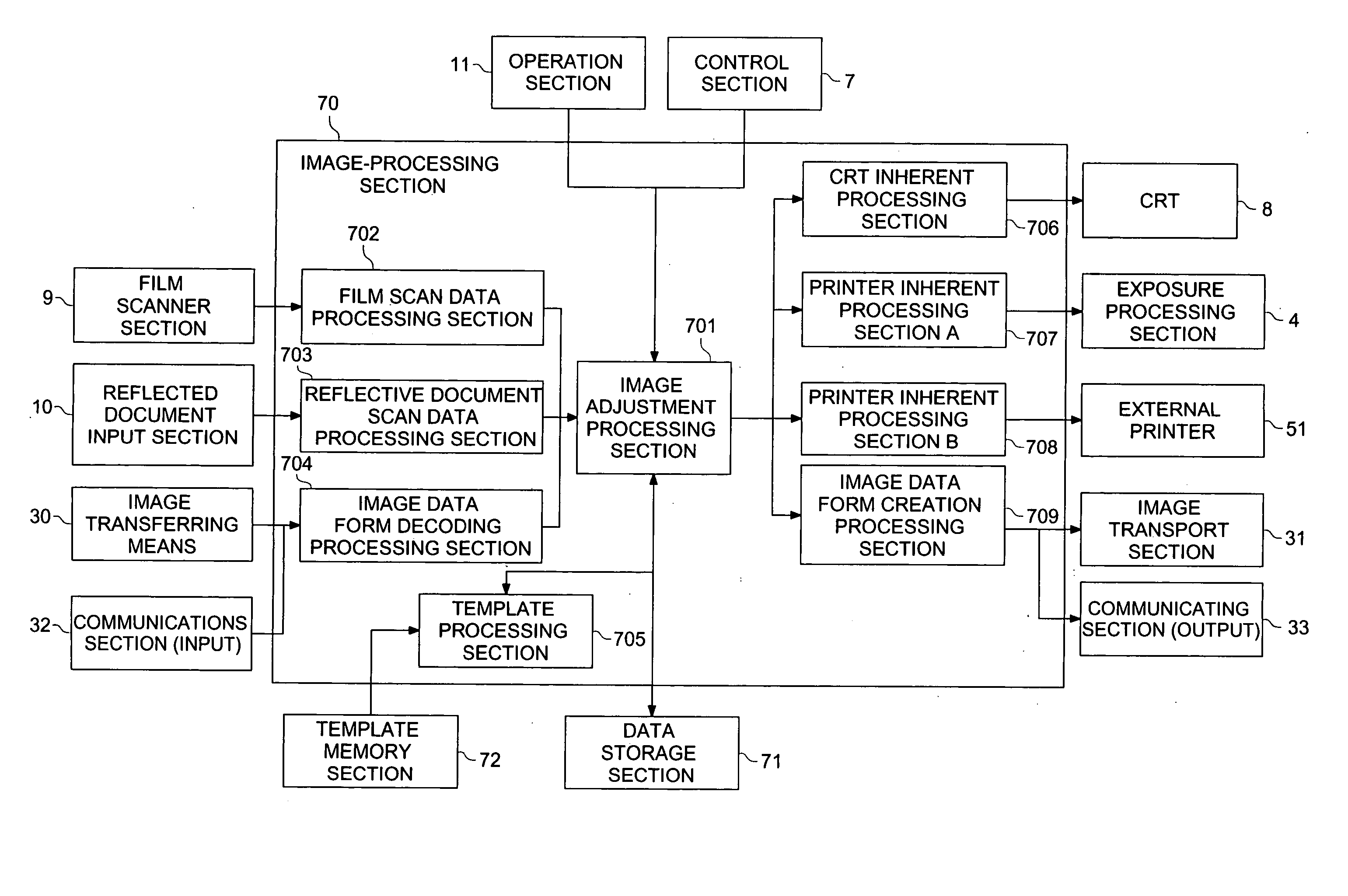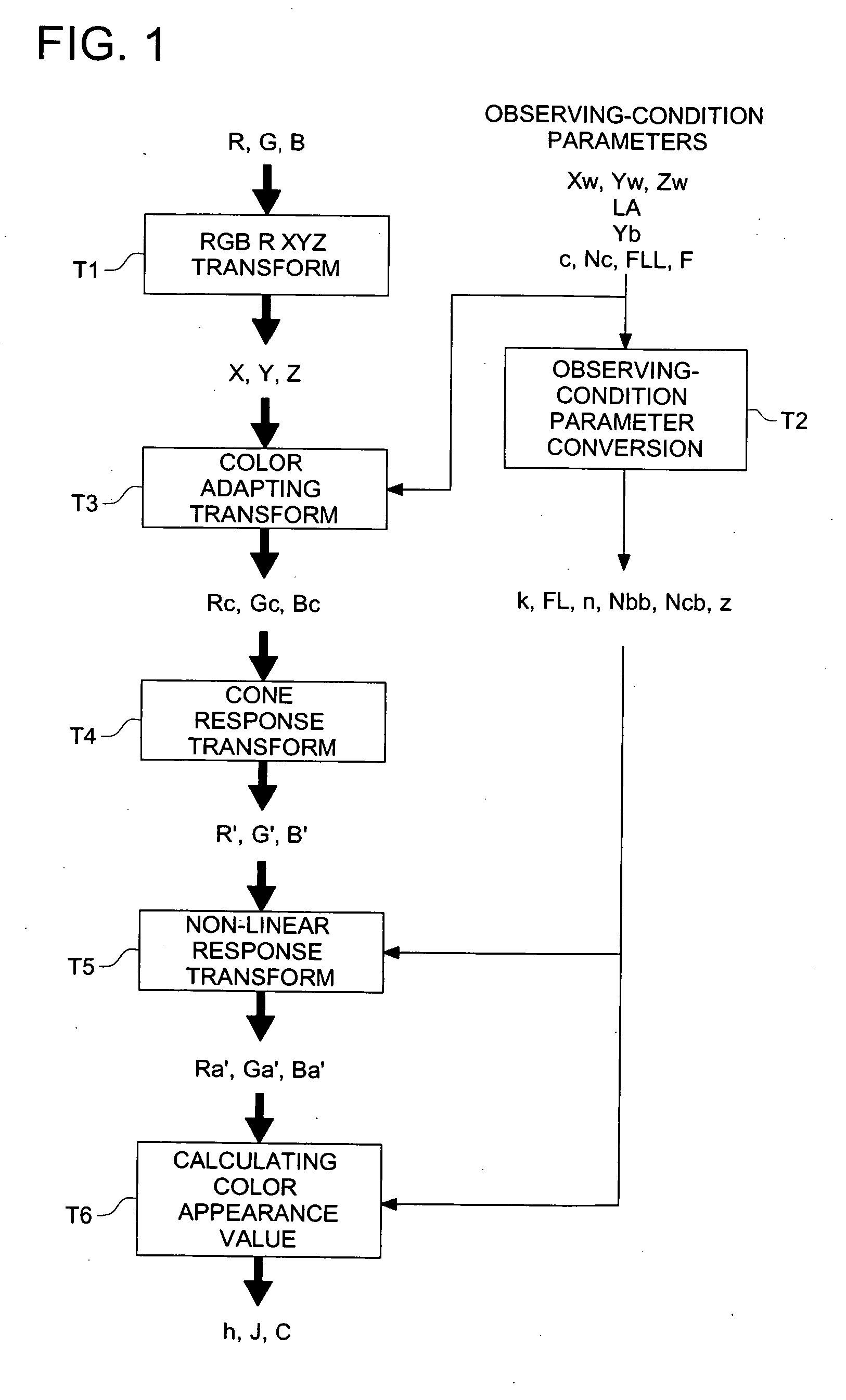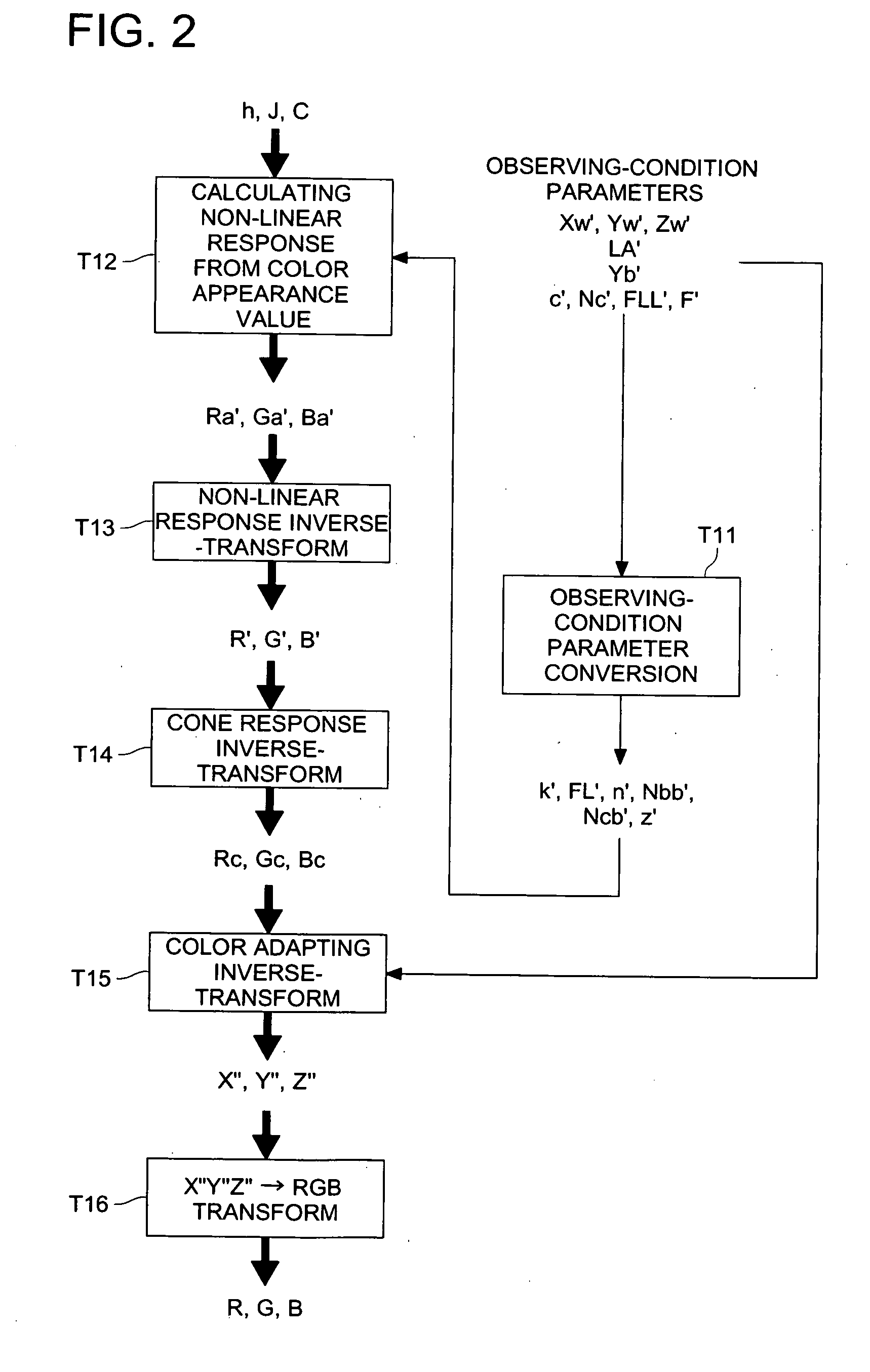Image-processing method, image-processing apparatus and image-recording apparatus
a technology of image processing and image recording, applied in the field of image processing method, image processing apparatus and image recording apparatus, can solve the problems of image giving a sense of incompatibility to the viewer, image will collapse, and information on gradation prior to compression or information prior to clipping is lost immediately, so as to reduce the deterioration of image quality and improve the working efficiency of image editing operation
- Summary
- Abstract
- Description
- Claims
- Application Information
AI Technical Summary
Benefits of technology
Problems solved by technology
Method used
Image
Examples
first embodiment
[0354] Referring to FIG. 5 and FIG. 6, the first embodiment of the present invention will be detailed in the following. Initially, the configuration of the first embodiment will be described.
70>
[0355]FIG. 5 shows a block diagram of the internal configuration of image processing section 70. As shown in FIG. 5, image processing section 70 is provided with image adjustment processing section 701, film scan data processing section 702, reflective document scan data processing section 703, image data form decoding processing section 704, template processing section 705, CRT inherent processing section 706, printer inherent processing section A 707, printer inherent processing section B 708, image data form creation processing section 709.
[0356] The film scan data processing section 702 applies various kinds of processing operations to the image data inputted from film scanner section 9, such as a calibrating operation inherent to film scanner section 9, a negative-to-positive reversal ...
second embodiment
[0374] Referring to FIG. 7 through FIG. 13, the second embodiment will be detailed in the following. Initially, the configuration of the second embodiment will be detailed. Since the internal configuration of image-processing section 70 in the second embodiment is the same as that in the first embodiment as shown in FIG. 5, its drawing is omitted and the same reference number will be employed for the same section. In the following description, among the sections included in the second embodiment, only sections different from those in the first embodiment will be detailed.
[0375] The image adjustment processing section 701 applies the gradation mapping (refer to the gradation conversion processing shown in FIG. 10) to the inputted captured-image data, and then, converts the gradation mapped image data by employing the color appearance model, in order to implement the color gamut adjustment processing for conducting the color gamut mapping for every outputting medium. According to the...
third embodiment
[0434] Referring to FIG. 14, the third embodiment will be detailed in the following. Initially, the configuration of the third embodiment will be detailed. Since the internal configuration of image-processing section 70 in the third embodiment is the same as that in the first embodiment as shown in FIG. 5, its drawing is omitted and the same reference number will be employed for the same section. In the following description, among the sections included in the third embodiment, only sections different from those in the first embodiment will be detailed.
[0435] Image adjustment processing section 701 converts the color space of the inputted captured-image data to the luminance expansion color space to apply the gradation mapping (the gradation conversion processing shown in FIG. 10). Further, image adjustment processing section 701 converts the gradation mapped image data by employing the color appearance model, in order to implement the color gamut adjustment processing for conducti...
PUM
 Login to View More
Login to View More Abstract
Description
Claims
Application Information
 Login to View More
Login to View More - R&D
- Intellectual Property
- Life Sciences
- Materials
- Tech Scout
- Unparalleled Data Quality
- Higher Quality Content
- 60% Fewer Hallucinations
Browse by: Latest US Patents, China's latest patents, Technical Efficacy Thesaurus, Application Domain, Technology Topic, Popular Technical Reports.
© 2025 PatSnap. All rights reserved.Legal|Privacy policy|Modern Slavery Act Transparency Statement|Sitemap|About US| Contact US: help@patsnap.com



